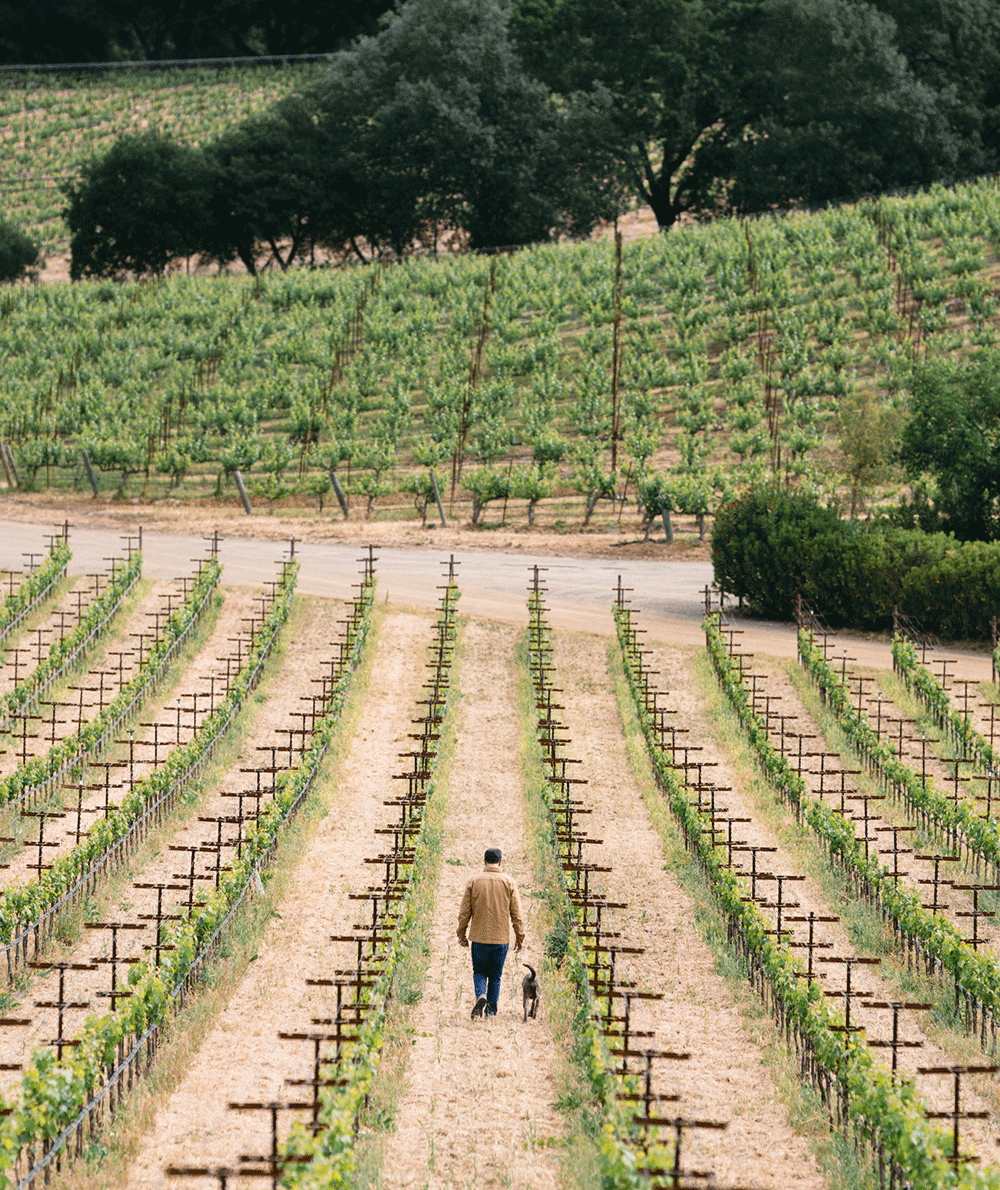
Research Meets Reward
Farming organically and biodynamically carries a great deal of responsibility. Each year, we seek to learn what the plants need to perform at the highest level—to best capture the diverse character of our estate, no matter the conditions of the season.
Our effort to understand Quintessa’s composition underground informs our vineyard decisions aboveground. Our geologic consultants have spent years mapping out the diversity of our rock composition, the parent material for soils at the surface. We now know that geology influences vine behavior equally with the conditions of our more visible terroir: vineyard aspects, sunlight, weather patterns.
There’s no better test of these findings than tasting the wines. In recent years, we’ve been able to sample our small lots in the context of terroir zones—an additional lens layered over our knowledge of specific vineyard blocks—applying what we’ve learned about the elements of the property. Cross-referencing the soil science with the sensory and chemical analysis of the wines has told us that geology and wine character are very much linked. And we integrate these evolving insights into our approach with every new vintage of Quintessa.
The 2021 vintage represents a milestone on that journey. The knowledge we had recorded and accumulated—with nuances from every corner of the estate—deepened our understanding of the land. It gave our seasoned team accurate expectations of what the vineyard would give us, and confidence in how to work with each section to take fruit quality to the next level.
Critical farming choices came early in the year, as we faced a challenge in the making: Winter storms yielded a scant 13 inches of rain, half of what is normal for this part of Napa Valley. It was the second year of drought—drier, in fact, than the first. Without saturated soils, there is little room for mistake. Action in the vineyard must be precise, managing vines for just what they’re capable of within the limited resources of the season. But within each block, we anticipated what our vines could do.
As early as January and February, the low rainfall informed our pruning—itself a subject of deliberate study with global experts, focused on shaping both for seasonal conditions and long-term vineyard health. With vine architecture a critical element of terroir that year, we sculpted the plants to anticipate smaller canopies and lower yields, giving the fruit the best chance at balanced ripeness come harvest.
Spring was refreshingly cool, allowing the smaller clusters to develop. A moderate summer ripened fruit smoothly and evenly, leading to an exciting combination of color, acidity, and flavor come harvest.
In the end, our deep understanding of the vineyard—geology, soils, vine behavior—was fully articulated in 2021. The result is a wine with great concentration and tannin structure, along with beautiful aromatics and savory nuances, anchored with volcanic minerality.
